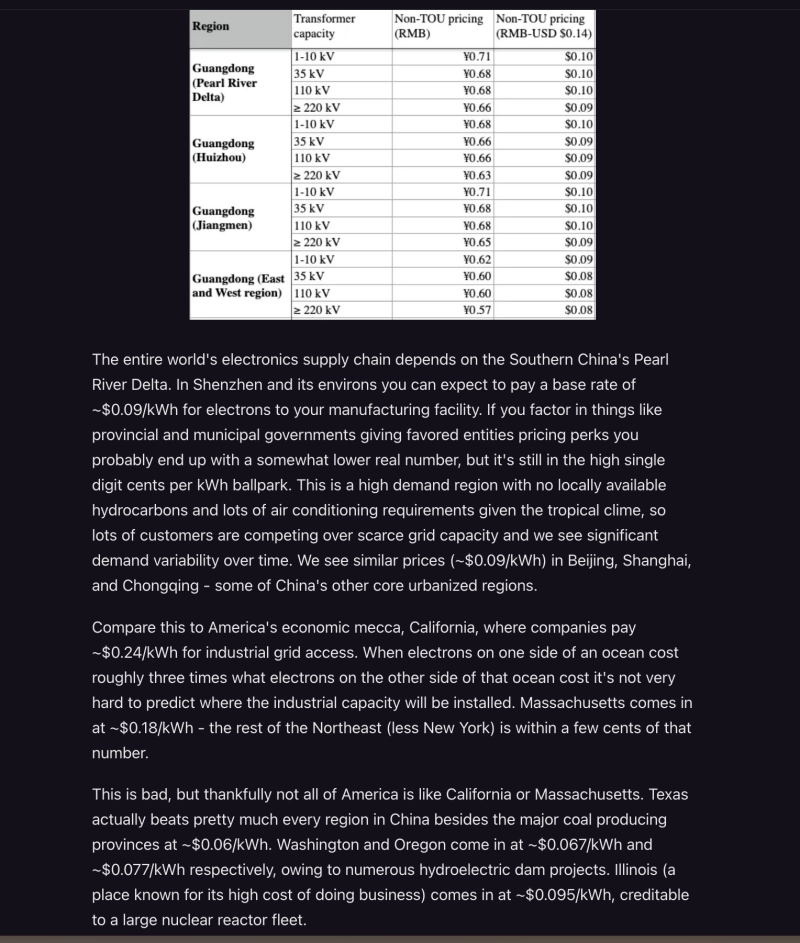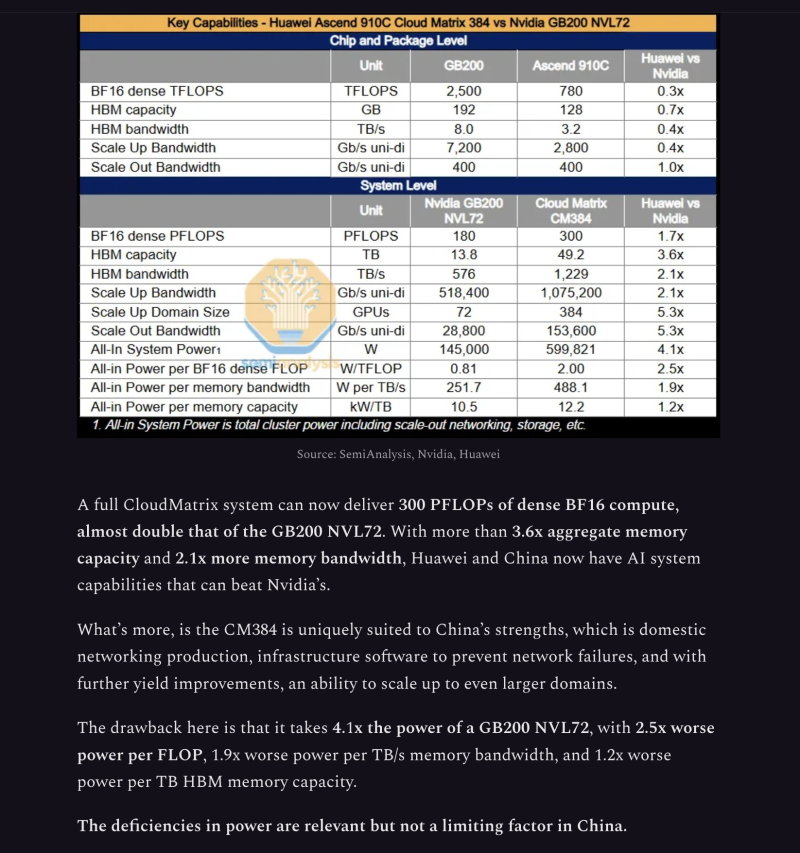● China is rolling out major electricity subsidies—covering up to half of power costs—for AI data centers that use homegrown chips, according to reports from Teortaxes and CN Wire. The move is meant to compensate for the fact that domestic processors from Huawei and Cambricon burn through more energy than the NVIDIA GPUs they replaced after U.S. export controls kicked in.

● The economics work in China's favor: industrial electricity rates in key regions like Guangdong run about $0.09–$0.10 per kWh—less than half what California pays at roughly $0.24 per kWh. As Teortaxes noted, "Their industrial energy costs are already below the U.S.," and this policy pushes them to "> Hopper levels of FLOPs per dollar," referring to NVIDIA's top-tier GPU performance.

● The subsidies target big tech players like ByteDance, Alibaba, and Tencent, whose energy bills have jumped since switching from NVIDIA's efficient chips to local alternatives. SemiAnalysis data shows Huawei's CloudMatrix CM384 system uses over 4× the power of NVIDIA's GB200 NVL72, with 2.5× more energy per unit of compute—the main reason behind the support program.
● According to MKTNews, regional governments in Gansu, Guizhou, and Inner Mongolia are already rolling out electricity discounts and direct cash grants, but only for facilities using Chinese chips. Some incentives are reportedly large enough to cover an entire year of operating costs, making the transition to domestic hardware much easier to swallow financially.
● Experts say Beijing is turning a technical weakness into strategic advantage. By absorbing efficiency losses through subsidies, China keeps its AI infrastructure expanding despite tech restrictions, essentially using cheap power to offset chip performance gaps.
● As competition in AI heats up globally, the policy shows China's willingness to sacrifice efficiency for self-reliance, doubling down on domestic supply chains and positioning AI infrastructure as a cornerstone of national competitiveness.
 Saad Ullah
Saad Ullah

 Saad Ullah
Saad Ullah


